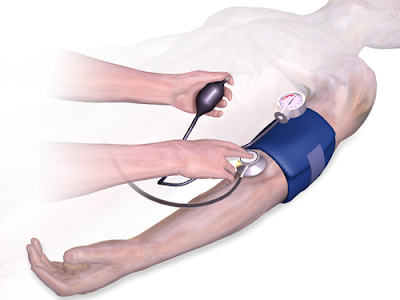Golden Seal Uses and Side Effects
Goldenseal: From Native Wisdom to Modern Hype
Before goldenseal became the darling of supplement companies, it was the secret weapon of Native American healers. They didn’t just sprinkle it on their cereal—they used it as an eye wash, a salve for wounds, and a remedy for stomach woes. This wasn’t some New Age fad; it was survival medicine, passed down through generations who understood the land and its gifts better than any modern marketer ever will .Fast forward to today, and goldenseal is being hawked for everything from menstrual cramps to muscle pain, sciatica, and even as a sidekick to “boost” the effects of other herbs. The root and rhizome of Hydrastis canadensis are where the magic (and the danger) lives, loaded with alkaloids like hydrastine and berberine, plus a cocktail of volatile oils, chlorogenic acid, phytosterols, and resins .
The Science: What’s Really in That Golden Root?
The Alkaloid Arsenal
- Hydrastine: This isn’t just a fancy plant chemical. Hydrastine can clamp down your blood vessels (peripheral vasoconstriction), slow your blood flow, and even mess with your nervous system if you take too much. It’s also a notorious inhibitor of key liver enzymes (CYP2C9, CYP2D6, CYP3A4), which means it can jack up the levels of other drugs in your system—sometimes dangerously so .
- Berberine: The real star of the show. Berberine is a broad-spectrum antimicrobial, a metabolic modulator, and a double-edged sword for your heart. At low doses, it can give your cardiac function a nudge; at high doses, it can slam the brakes. It also messes with drug metabolism and can decrease the effect of anticoagulants like heparin, raising the stakes for anyone on blood thinners .
Other Constituents
Don’t ignore the supporting cast: volatile oils, chlorogenic acid, phytosterols, and resins. They may not get the headlines, but they contribute to goldenseal’s anti-inflammatory, immunomodulatory, and muscle relaxant properties .What Goldenseal Can (and Can’t) Do for You
Traditional and Modern Uses
- Digestive Aid: Used for everything from diarrhea to liver sluggishness. The science? Berberine and friends do have antimicrobial effects, but most of the evidence is from test tubes and animal guts, not real people .
- Menstrual and Muscle Pain: Goldenseal’s muscle relaxant and antispasmodic effects are real, but inconsistent. Don’t expect miracles for your cramps or sciatica.
- Wound and Skin Care: Topical goldenseal has a long track record for treating wounds and herpes lesions. The antimicrobial action is legit, but again, don’t expect it to replace your doctor .
- Postpartum Hemorrhage: Historically used to slow bleeding after childbirth, thanks to hydrastine’s hemostatic action. But the evidence is patchy, and the risks are real—especially for pregnant or breastfeeding women .
The “Potentiator” Myth
Some herbalists claim goldenseal “boosts” the effects of other herbs. There’s a kernel of truth here: by inhibiting liver enzymes, goldenseal can increase the levels of other compounds in your blood. But that’s a double-edged sword—what helps one herb work better can also turn another into a toxic threat .Dosage: Where Tradition Meets Uncertainty
Let’s get real—there’s no gold standard for goldenseal dosing. Here’s what’s floating around in the herbal world :- Alcohol and water extract: 250 mg by mouth, three times a day.
- Dried rhizome: 0.5 to 1 gram in a cup of water, three times a day.
- Expectorant: 250 to 500 mg by mouth, three times a day.
- Capsules/Tablets: Most commercial products offer 250–500 mg per dose, up to three times daily.
Side Effects: The Dark Side of the Golden Root
Goldenseal isn’t all sunshine and healing. Here’s what the supplement labels won’t tell you :- Digestive Distress: Nausea, vomiting, and general stomach upset are common, especially at higher doses.
- Nervous System Effects: Anxiety, nervousness, and even depression can creep in with prolonged use.
- Cardiovascular Risks: Low blood pressure, slow heart rate, and—at overdose levels—cardiac damage.
- Respiratory Depression: Especially dangerous if you’re mixing goldenseal with other sedatives.
- Allergic Reactions: Hives, swelling, and even anaphylaxis in rare cases.
- Pregnancy and Infants: Goldenseal can trigger uterine contractions (bad news for pregnancy) and cause jaundice in newborns—absolutely off-limits for these groups .
- Drug Interactions: Goldenseal can mess with the metabolism of a laundry list of drugs, especially those processed by the liver. If you’re on anticoagulants like heparin, the risk of bleeding or clotting complications goes up .
The Bottom Line: Use with Eyes Wide Open
Goldenseal is a relic of ancient medicine and a marvel of plant chemistry. But don’t let the “natural” label fool you—this root is potent, unpredictable, and not for the reckless. If you’re thinking about adding goldenseal to your regimen, talk to a healthcare professional who actually knows their herbs from their hype. And if you’re pregnant, nursing, on blood thinners, or taking any prescription meds, steer clear unless your doctor gives you the green light.“He who takes medicine and neglects diet wastes the skill of his doctors.”
— Ancient Chinese Proverb
Goldenseal: respect it, don’t worship it. The truth is always more complicated—and more interesting—than the marketing.— Herbs of Ra 🌿
Facebook.com/herbsofra
Instagram.com/herbs_of_ra




Comments